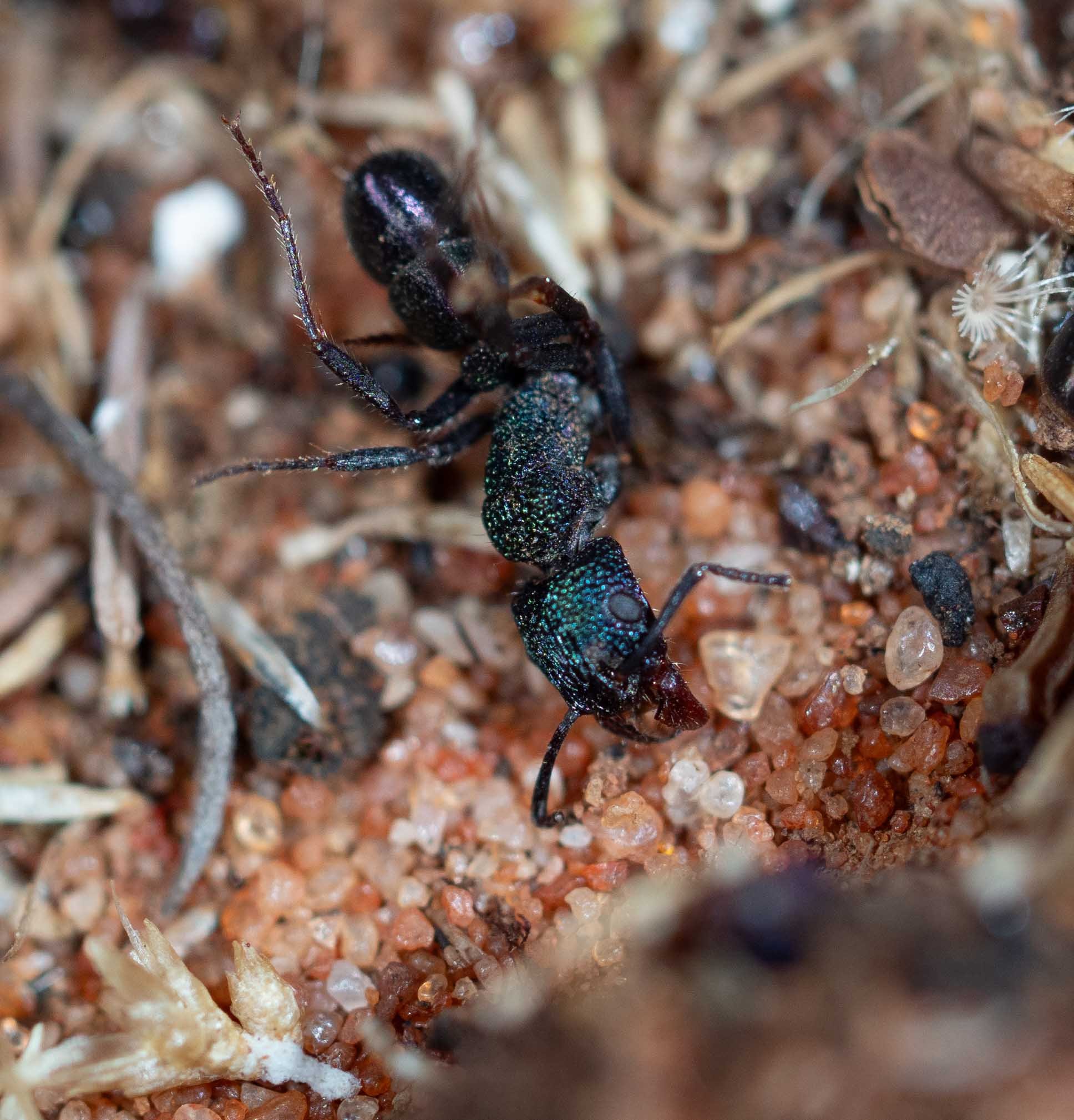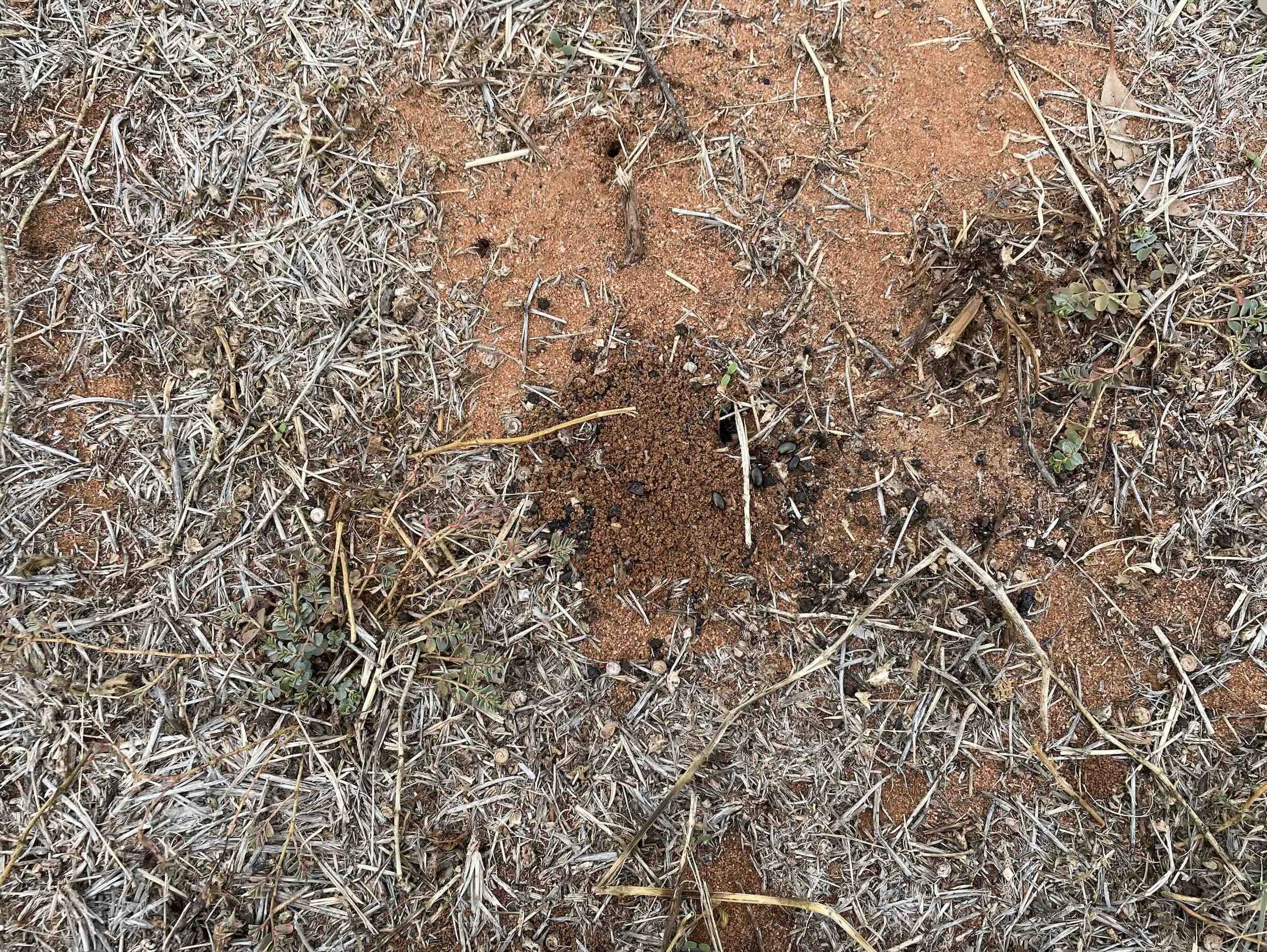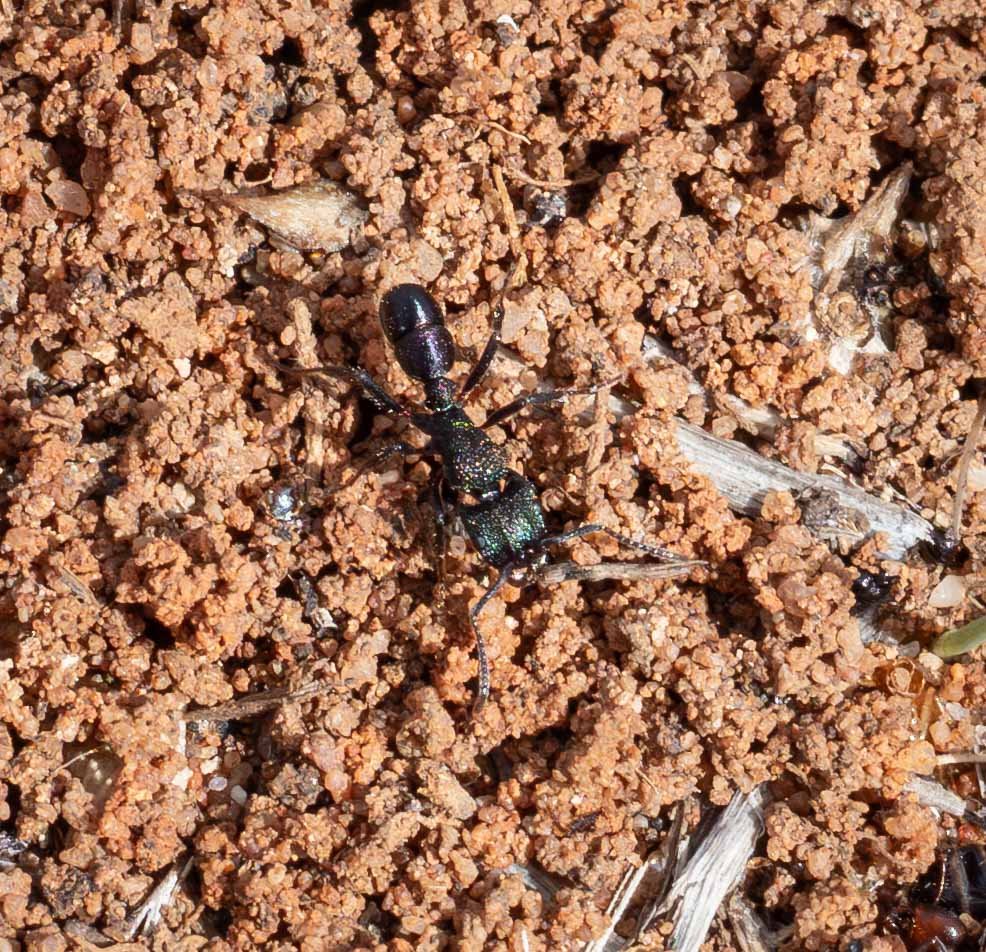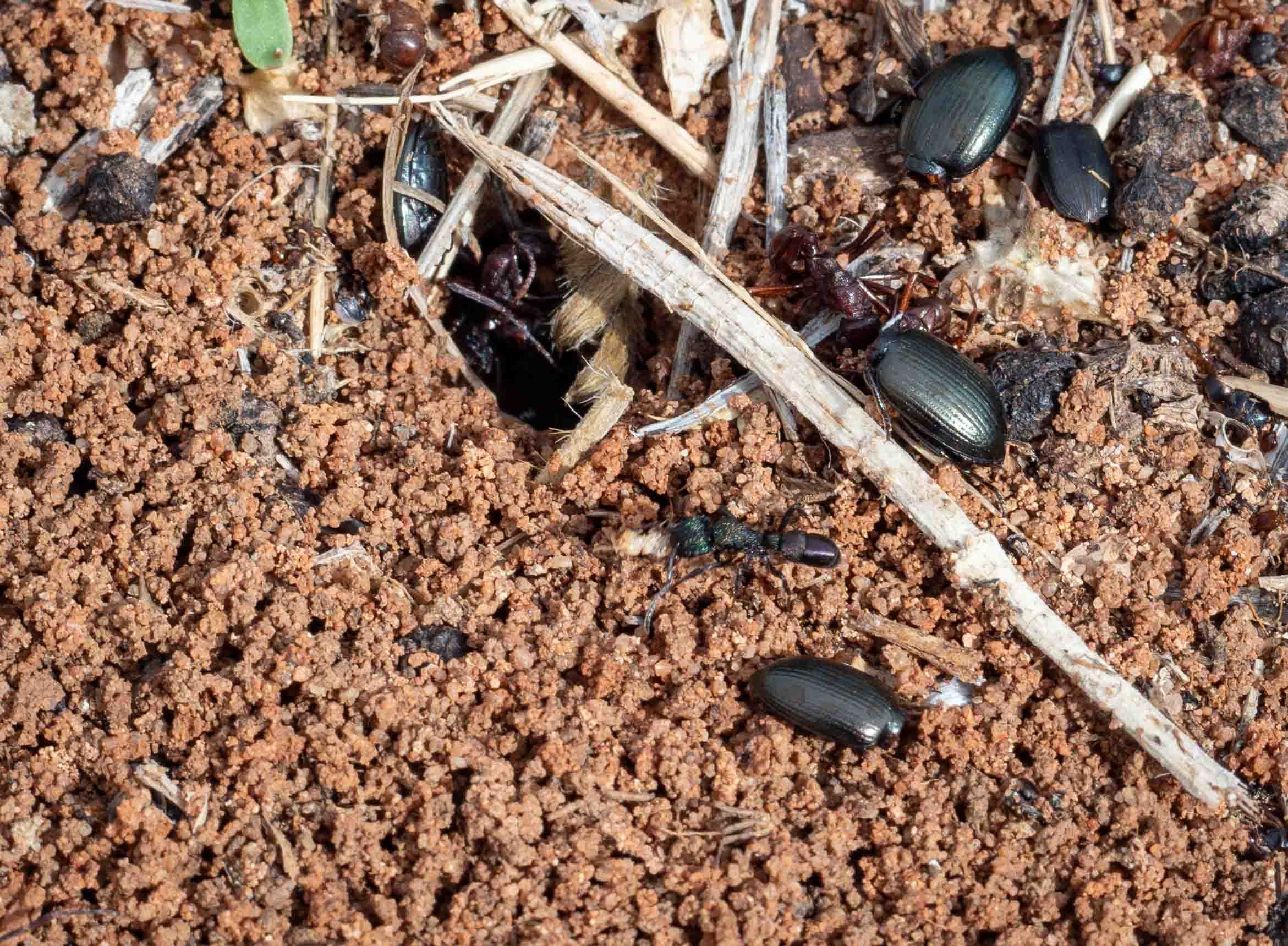
These tough-bodied little ants with the metallic sheen are a common sight across most of Australia. But unlike the meat ants, their colonies are often quite small. Indeed, we didn't see many individuals out and about. Also unlike meat ants, they can sting!

We found their nest on a little used track with a covering of dry vegetation. The low mound of excavated soil was less obvious than the collection of beetle carcasses surrounding it.

The literature on this species is extensive, their biology intriguing. Workers can mate and become reproductive, so colonies don't follow the typical 'single queen plus working daughters' model. And as colonies grow, the older workers tend to specialise in foraging while their younger nestmates stay home to care for the brood (ref. 2).

The nest opening was slightly obscured by grasses. Indeed, the reason we didn't see many active ants may be because they prefer to forage among vegetation. There they suffer less direct competition from their dominant neighbours, the meat ants (ref. 3).




